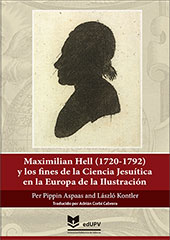
|
||||||||
| 0 items | |
| Subtotal: 0,00 € |
| Materia | |
|
Ciencias |
|
| Idioma: Inglés | |
| Colección: UPV[Scientia] | |
| Formato: Archivo electrónico. PDF acceso libre. Color | |
| Tamaño: 17 x 24 | Nº Páginas:166 |
| Nº Edición: 1 / 05-10-2023 | |
| ISBN: 978-84-1396-153-8 | Ref.: 6663 |
| DOI: https://doi.org/10.4995/SCCIE.2023.666301 | |
| Tapa blanda. Rústica | 12,00 € |
This book is intended to be the first volume in a series devoted to an in-depth study of medieval European and middle-east comet records. With the aim of covering the entire medieval period, widely understood as corresponding to the 5th to 15th centuries AD, this first volume deals with the 5th, 6th, and 7th centuries. The rest will follow until the period is completed. Comet catalogs are a classic literary genre in the history of astronomy since before the 20th century. In them, the different authors presented reports of observations of different phenomena related to these celestial bodies but always presented a characteristic bias favorable to records from Asia, especially Chinese. This fact is understandable since, in those countries, there was a heritage of systematically writing chronicles of the successive reigns, pointing out astronomical events that, according to their traditions and beliefs, would influence the kingdom or the monarch in some way. This was not the case in Western countries, where we find fewer astronomical observations that are much more dispersed in works by different individual authors who often copy each other or, at least, tend to copy from the most prestigious ones. As a result, to date, there has been no research dedicated to exhaustively studying European literary sources, searching for elements that allow expanding the historical databases on medieval comets, and, at the same time, carrying out astronomical analyses that allow in some cases, the improvement or even the proposal of a set of orbital elements associated with comets.

|
||||||||
| Sicoli, Piero |
He works at the Osservatorio Astronomico Sormano (Italy) where he has discovered about fifty new asteroids and identified several hundred, including some PHA (potentially hazardous asteroids). Combining his passion for celestial mechanics and historical comets, he has tried to calculate some of their orbits. In 1999, asteroid (7866) Sicoli, discovered at Lowell Observatory in Arizona, was named after him. |
| Gorelli, Roberto |
Roberto Gorelli worked in a public administration and is now retired. In the field of Astronomy he has worked for many years mainly on research on old texts for the retrieval of astronomical data of all types of astronomical objects and on meteoritical topics as meteorite observations, meteor showers, and discovery of meteorite craters. He is also involved in telescope observations of comets and asteroids and in recent years also of variable stars, especially extragalactic ones. |
| Martínez Uso, María José |
She is a researcher in the Applied Mathematics Departmentat the Universitat Politècnica de Valencia, Spain. She worked in Celestial Mechanics for some years and then obtained a degree in History. Since 2008 she has combined Fundamental Astronomy and history of Astronomy. In this issue, her current topic of research is the study of Astronomical records in medieval documents from the Iberian Peninsula. |
| Marco, Francisco J. |
He is a researcher in the Mathematics Department the Universidad Jaime I de Castellón, Spain. He worked in Celestial Mechanics for some years and then became interested in History of Astronomy. Since 2008 he has combined Fundamental Astronomy and history of Astronomy. His current topic of research is the study of Astronomical Reference Frames and the Application of ancient astronomical records in order to obtain valuable results in Fundamental Astronomy. |